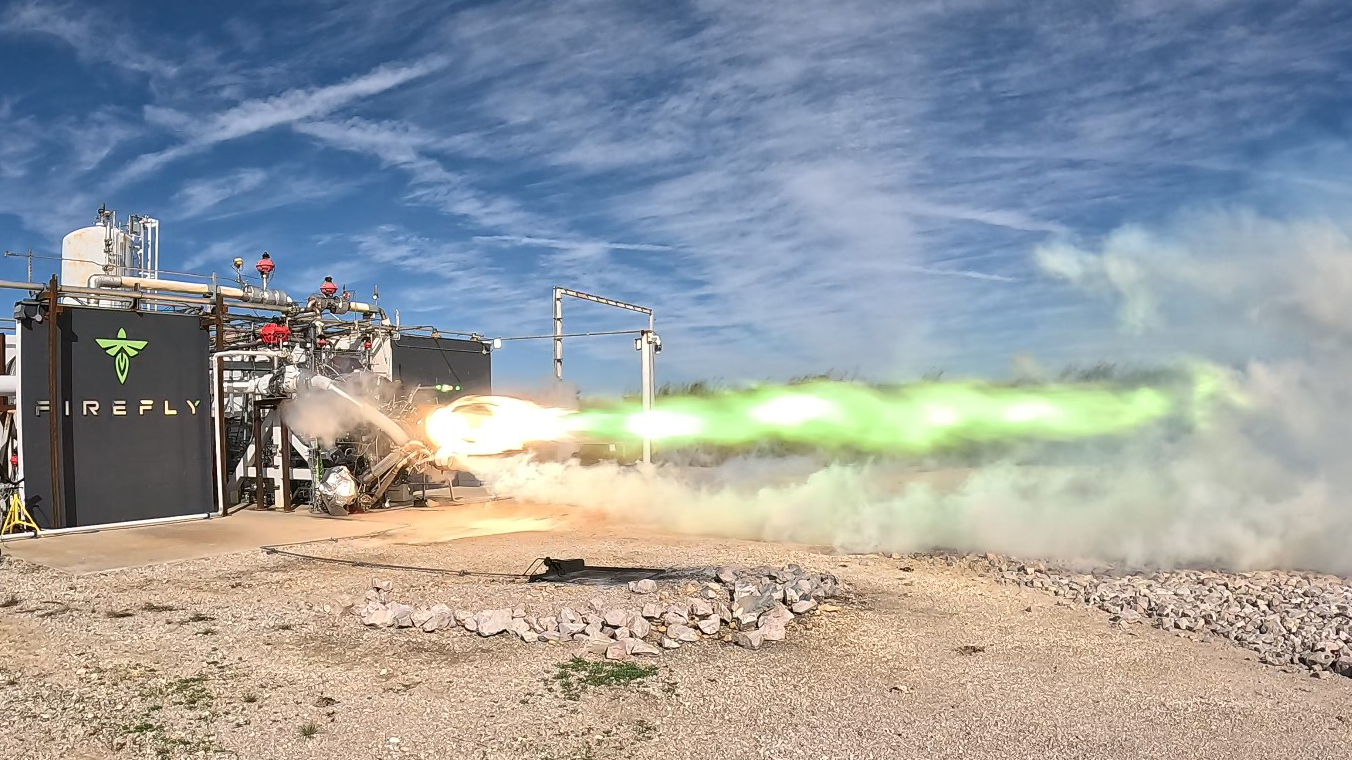
Last week Firefly completed a test fire of its Miranda engine that will be used on its Medium Launch Vehicle and Northrop Grumman‘s Antares 330 rocket. This was a first for the company and a quick one as the company only signed the contract from Northrop just over one year ago.
Firefly’s new engine comes alive
Firefly conducted its first hot fire test of its new Miranda rocket engine last week at its test facility in Briggs, Texas. This engine will be used on the company’s collaborative rockets with Northrop Grumman, the Antares 330 and Medium Launch Vehicle.
The company didn’t disclose for how long the hot fire was for.
“Miranda is the fastest propulsion system we’ve built and tested to date,” Bill Weber, Firefly CEO, said in a statement. The two companies signed an agreement to codevelop to new rockets in August of 2022, meaning the Miranda engine went from development start to hot fire test in just over a year.
The Antares 330 will be a block upgrade to the current Antares rocket, replacing the Ukrainian built booster and Russian engines with a first stage built by Firefly. This will return Northrop’s ability to launch its Cygnus cargo spacecraft to the International Space Station for NASA, before it is retired.
To eventually replace the Antares rocket, Firefly and Northrop Grumman will come out with what they’re calling for now the Medium Launch Vehicle, which could compete with SpaceX for launch contracts.
In the future Weber said that the company will work towards performing a 206-second full duration hot fire of the engine. Seven of these engines will power the Antares 330 and MLV, producing up to 1.6 million lbf in total.
Join our Discord Server: Join the community with forums and chatrooms about space!
Alpha moving forward with next launch
Unlike other companies, Firefly is still operating its smaller Alpha rocket that first successfully made it to orbit earlier this year. Last week the company also shared details into its next launch, slated to fly this month.
Called “Fly the Lightning,” the mission will fly a tech demonstrator for Lockheed Marten called the Electronically Steerable Antenna (ESA). Here’s how Firefly’s website describes it:
The ESA payload will demonstrate faster on-orbit sensor calibration to deliver rapid capabilities to U.S. warfighters. The ESA sensor is expected to calibrate in a fraction of the time it takes to operationalize traditional on-orbit sensors, which historically can take months to be powered on, fully calibrated and ready to perform their mission.
This will be the company’s fourth Alpha launch. Its first mission failed to make it past first stage boost after losing an engine and the second flight made it to orbit but at a much lower altitude. Because of the lower orbit, the payloads burned up on reentry about a week after deployment.
Firefly’s first fully successful mission was for the Space Force and part of a rapid launch program where it only had 24 hours to integrate the payload and launch. Now, the company will have a commercial mission to fly and also livestream it, which it couldn’t on the previous mission.
Official launch coverage will begin about an hour before liftoff.
FTC: We use income earning auto affiliate links. More.



Comments